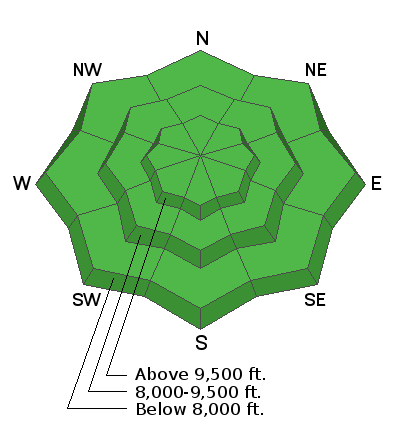Forecast for the Provo Area Mountains

Issued by Trent Meisenheimer on
Wednesday morning, December 9, 2020
Wednesday morning, December 9, 2020
Today, the overall avalanche danger is LOW on all aspects and elevations. This means that human-triggered avalanches are unlikely, but small avalanches in isolated areas are possible.
With the increase in Southwest winds, keep an eye out for any wind drifted snow, as it won't take a lot of drifting snow to create a small wind slab in the upper elevation terrain.

Low
Moderate
Considerable
High
Extreme
Learn how to read the forecast here







